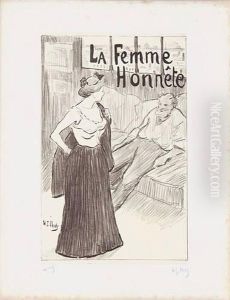Henri G. Ibels Paintings
Henri Gabriel Ibels was a French illustrator, printmaker, and painter, born on November 30, 1867, in Paris. He was a significant figure in the French artistic movement known as Les Nabis, which was a group of avant-garde post-impressionist artists who set the pace for fine arts and graphic arts in France at the end of the 19th century.
Ibels studied at the Académie Julian in Paris, where he met other future members of Les Nabis, such as Pierre Bonnard, Édouard Vuillard, and Paul Sérusier. He was particularly influenced by the graphic arts and began his career in illustration and poster design. His works were characterized by strong black contours and flat areas of color, inspired by the style of theatrical posters and Japanese woodblock prints, which were popular among avant-garde artists at the time.
The artist was known for his social commentary; he often depicted scenes of modern Parisian life, including the demimonde, street performers, and the bohemian lifestyle. He also contributed to several periodicals of the day, such as 'La Revue Blanche', where his illustrations accompanied texts by contemporary writers, thereby bridging the gap between literature and visual art.
Aside from his graphic work, Ibels also painted and participated in numerous exhibitions. He exhibited with Les Nabis at Le Barc de Boutteville and was involved in the 1891 exhibition at the Le Revue Blanche gallery, which helped to solidify the group's identity. Although less celebrated than some of his contemporaries, Ibels' work was instrumental in the development of graphic art in France.
Henri Ibels died on February 3, 1936, in Paris. Despite being less well-known today compared to other members of Les Nabis, his contributions to the art world, particularly his lithographs and illustrations, remain significant. His works can be found in several museums, including the Musée d'Orsay in Paris and the Van Gogh Museum in Amsterdam.
